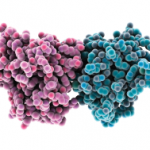 ACR CONVERGENCE 2020—During the ACR Convergence session Immunology Update—The Decade in Review, Chandra Mohan, MD, PhD, Hugh Roy and Lillie Cranz Cullen Endowed Professor, University of Houston, took a deep dive into the immunology behind systemic lupus erythematosus (SLE) and research findings from the past decade.
ACR CONVERGENCE 2020—During the ACR Convergence session Immunology Update—The Decade in Review, Chandra Mohan, MD, PhD, Hugh Roy and Lillie Cranz Cullen Endowed Professor, University of Houston, took a deep dive into the immunology behind systemic lupus erythematosus (SLE) and research findings from the past decade.
He addressed 10 themes that have dominated discussions and studies in the past 10 years:
- Interferon and other gene signatures;
- Endosomal DNA/RNA sensors in SLE;
- Cytosolic DNA/RNA sensors in SLE;
- NETosis;
- Immunogenic forms of chromatin;
- Pathogenic T cells in SLE;
- Pathogenic B cells in SLE;
- Lupus nephritis—recent insights;
- NPSLE—recent insights; and
- Role of the environment in SLE.
Role of Interferon
Interferon signatures and their role in lupus immunology were one focus of Dr. Mohan’s session. Interferon signatures were initially recognized in plasma, but researchers now know interferon signatures can be induced in multiple cell types, Dr. Mohan said. Studies of both adults and children with lupus have similar findings. Interferons are expressed most prominently by monocytes, plasma cells, plasmacytoid dendritic cells, and CD4 and CD8 T cells, he noted.
Studies have provided mixed results on whether interferon signatures change with disease activity and whether interferon should be used as a therapeutic target for SLE, Dr. Mohan stated.
NETosis
When addressing what causes the increase in interferon, Dr. Mohan discussed increased stimulation of toll-like receptors (TLR) 7, 8 and 9.
Dr. Mohan briefly addressed why SLE may be more prevalent in women than men. He notes that TLR-7 is encoded by the X-chromosome. TLR-7 may escape inactivation in certain lineages; this may lead to a double dose of TLR-7 in women, which may explain the increased prevalence of lupus among women.
Dr. Mohan also discussed that DNA and RNA sensors may be activated more in lupus for multiple reasons, including NETosis (i.e., dying neutrophils form neutrophil extracellular traps), mitochondrial DNA, apoptotic microparticles and reduced clearance, as well as genetic polymorphisms in TLR and other pathway genes. As one example, Dr. Mohan shared that microparticles that contain nucleic acids, cytokines and tissue factor are two to 10 times more abundant in SLE.1
“Collectively, these all can increase the formation of autoantibodies and immune complexes,” Dr. Mohan said.
B & T Cells
Dr. Mohan’s presentation discussed newer players in the immunology of SLE, such as T follicular helper cells and age-associated B cells. “Age-associated B cells appear highly sensitive to TLR-7 activation and seem to show up very early in lupus, even before a formal disease diagnosis,” Dr. Mohan said.


